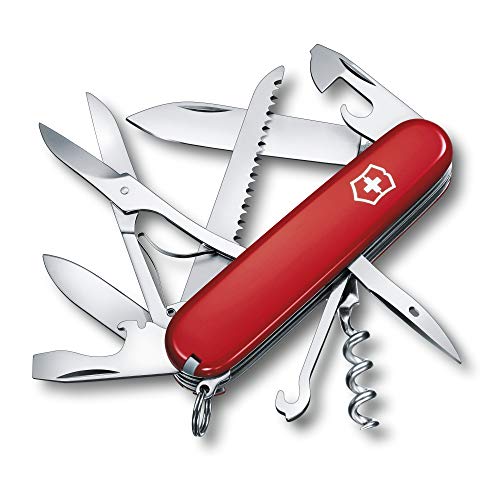What is a Swiss Knife?
A Swiss knife, also known as a Swiss Army knife, is a versatile multi-tool that was originally created for the Swiss Army. It typically has a folding design and features various blades, screwdrivers, bottle openers, and other tools all in one compact package. The Swiss knife is known for its durability and functionality, making it a popular tool for outdoor enthusiasts, travelers, and everyday use.
Why Sharpen a Swiss Knife?
Sharpening a Swiss knife is essential for maintaining its performance and longevity. Over time, the blades and tools on a Swiss knife can become dull through regular use. Dull blades not only make cutting tasks more difficult but can also be dangerous as they require more force and can slip, leading to accidents. By sharpening your Swiss knife, you can ensure that it remains sharp and functional, ready for any task you may encounter.
How to Sharpen a Swiss Knife?
Here are step-by-step instructions on how to sharpen a Swiss knife:
Step 1: Gather the necessary materials
To sharpen your Swiss knife, you will need a sharpening stone or honing rod. A sharpening stone is a rectangular block made of natural or synthetic materials that are designed to sharpen blades. A honing rod, on the other hand, is a metal rod with a fine abrasive surface used for realigning the blade’s edge. Choose the tool that you are most comfortable using and ensure it is appropriate for the type of blade on your Swiss knife.
Step 2: Determine the angle
Next, you need to determine the angle at which you will sharpen the blades of your Swiss knife. Most Swiss knives have a beveled edge at approximately 15 to 20 degrees. If you are unsure, consult the manufacturer’s guidelines or look for information specific to your knife model.
Step 3: Sharpen the blades
Using the sharpening stone or honing rod, place the blade of your Swiss knife against the surface at the determined angle. Apply light pressure and run the blade along the stone or rod, moving from the base to the tip. Repeat this motion several times on both sides of the blade until you feel the edge becoming sharper. Take care not to apply too much pressure, as it may damage the blade.
Step 4: Test the sharpness
After sharpening, carefully examine the blade of your Swiss knife to assess its sharpness. If the blade easily cuts through paper or produces a clean shave on your arm, it is likely sharp enough for most tasks. If not, repeat the sharpening process until you achieve the desired sharpness.
Step 5: Maintain the sharpness
To maintain the sharpness of your Swiss knife, it is essential to regularly sharpen it and keep it clean. After each use, wipe the blade clean and store it in a dry place to prevent rusting. Avoid using your Swiss knife on hard surfaces or for tasks it is not designed for, as this can dull the blade quickly. By taking proper care of your Swiss knife, you can ensure it remains sharp and ready for use.
Tips for Sharpening a Swiss Knife
Here are some additional tips to keep in mind when sharpening your Swiss knife:
- Follow the manufacturer’s instructions or guidelines specific to your knife model for the best results.
- Use consistent and even strokes when sharpening the blades to ensure an even edge.
- If you are uncomfortable sharpening the blades yourself, consider taking your Swiss knife to a professional knife sharpening service.
- Consider investing in a knife sharpening system or kit for more precise and controlled sharpening.
- Practice proper safety measures when handling sharp objects. Always keep your fingers away from the blade and work in a well-lit area.
By following these steps and tips, you can effectively sharpen your Swiss knife and maintain its functionality for years to come.






